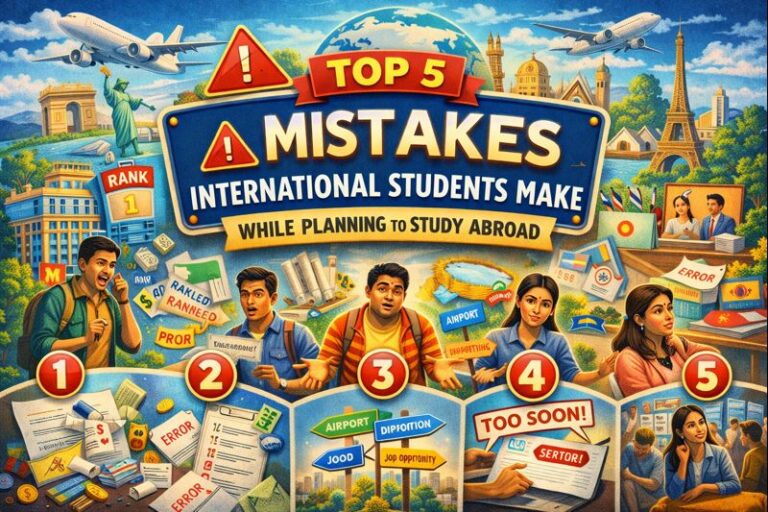If you finish university in 2026, you may work until 2056. That is three full decades. The jobs your parents saw when they graduated cannot guide you for that long. New tools—artificial intelligence, climate technology, virtual teams—are changing workplaces faster than before.
A recent World Economic Forum survey of more than 1,000 big companies says that about 39% of the skills they need today will be different by 2030.
The study covers every major industry, so the number is trusted by governments and employers alike.
This indicates a future that young graduates need to plan for.
Think back 20 years.
A strong résumé would list skills like “good at Word, Excel, and PowerPoint.”
Today’s job ads highlight very different top job skills: AI literacy, data analysis, project management, and teamwork across time zones.
These are not buzzwords. They describe real gaps that firms are willing to pay to fill.
The point is not that degrees are useless. A degree is still your launch-pad.
But you keep flying only by adding new skills every few years. That mind-set is now normal.
To choose which skills to build first, let’s look at the big forces that are pushing employers in new directions.
Four forces that push in-demand skills
Artificial Intelligence (AI)
ChatGPT reached 100 million users in weeks.
Tools like this can write reports, check code, and search huge datasets. So, companies now need people who can guide, test, and improve these systems.
In the WEF study above, leaders said AI alone drives much of the 39% skills change they see being most in-demand.
The Green Transition
Countries are racing to cut carbon pollution. Investors are moving trillions of dollars into clean energy, green buildings, and “net-zero” supply chains.
LinkedIn data shows that demand for workers with green skills is growing roughly 20 % per year worldwide and soared 46 % in the UK last year.
Engineers who can measure carbon, or finance graduates who can read ESG reports, are suddenly in short supply.
Remote and Hybrid Work
During the pandemic, many jobs moved online. Some returned to the office, but remote work is now a permanent way of work for many.
In late 2024, only about 9% of new U.S. job ads were remote, yet these roles attracted 16% of all applications.
Employers like remote teams because they can hire good talent anywhere. Workers like them for flexibility.
Result: strong demand for people who can communicate clearly in English, manage time-zone gaps, and lead virtual meetings.
Global Digital Business
Cloud software, digital payments, and cheap shipping let even small firms sell across borders. This creates steady demand for product managers, supply-chain analysts, digital marketers, and customer-success specialists who understand data and cultural nuance.
None of these four forces will slow down anytime soon.
AI models get smarter every six months.
Climate targets are tightening.
Remote-work tools improve daily.
And digital business keeps spreading.
So, for young graduates, preparing for jobs that ride these waves is the safest long-term plan.
Now, let’s group the specific abilities that employers keep asking for into clear skill clusters.
Five core skill clusters for which employers hire
| Skill Cluster | Sample Skills | Common Jobs & Sectors | Proven Study Paths |
| 1. Digital & Tech | Basics of AI & machine learning, data analytics, cloud services, cyber-security hygiene | Data analyst, AI engineer, cloud consultant (IT, finance, healthcare) | BTech / BE Computer Science, MS Data Science, MSc Cyber Security |
| 2. Business & Strategy | Project management, product management, financial modelling, supply-chain planning | Product manager, business analyst, operations planner (consulting, e-commerce, manufacturing) | MBA, MSc Business Analytics, PgDip Supply Chain |
| 3. Human (“Power”) Skills | Clear writing, public speaking, critical thinking, adaptability, conflict resolution | Team lead, account manager, HR partner (all knowledge sectors) | Often built into MBAs, MA Communication, leadership workshops |
| 4. Green & ESG | Carbon accounting, life-cycle analysis, renewable-energy design | ESG analyst, wind-farm engineer, sustainability consultant (energy, construction, policy) | MEng Environmental Engineering, MSc Sustainability, MS Energy Systems |
| 5. Language & Cultural Intelligence | Academic English, an extra foreign language, cross-cultural teamwork habits | Global sales rep, tourism manager, diplomatic trainee | ESL foundation courses, language minors, cultural-studies electives |
How does this help you plan your higher education?
Three ways:
- Clarity. The clusters show what to learn.
- Mix & match. AI projects still need project managers; green engineers still need data skills; remote teams fail without good communication. Crossing clusters is normal, and in many cases even desirable.
- Reliable pathways. Every study path listed has a long track record of alumni getting jobs in that cluster. You will read about shorter micro-credentials later, but start with these tried-and-tested routes.
A recent Indian graduate combined a B. Tech in Mechanical Engineering with an online course in life-cycle analysis. He then joined a German master’s in Renewable Energy and now works at a wind-turbine firm, writing carbon reports for investors. One basket was green & ESG; the other was digital analytics; both mattered.
Now that you see the clusters, the next logical step is to choose a country, a course, and a work-rights plan that line up with the skills you want to master.
Picture this.
You have decided that data analytics excites you more than anything else. Now you must place that interest on the world map.
- Canada keeps showing up in every news story about artificial-intelligence hiring; its immigration rules even give most graduates up to three years of work time after a master’s degree.
- Germany, on the other hand, is famous for green engineering and lets you stay at least eighteen months to look for work once you finish.
- Australia and the United States fall somewhere in between—both are strong in business and technology but differ in work-permit length and tuition fees.
The point is simple: start with the skill, then trace the places that reward it.
Once you have a short list of countries, read two or three university web pages from each country. Look for course outlines that teach the skill cluster you want.
If you see subjects like “Machine-Learning Foundations,” “Lifecycle Carbon Accounting,” or “Project Management Studio,” you are on the right track. If the program description talks only about history or theory, keep searching.
Good courses also let you practise while you study. They run co-op semesters, paid projects, or at least strong internship offices.
A single semester in a real company can do more for your résumé than three perfect exams.
Last, check past student outcomes. Universities publish the jobs their recent graduates secured and the average salaries. Those numbers tell you how well the course connects to the local labor market.
This can sound like a lot of research. GradRight’s university search tool can save time here. Type the skill that matters to you—say, data storytelling—and the filter shows programs, internship links, and last year’s salary bands in one view. It is not magic, but it removes a lot of guesswork.
Once you have a likely country and course, you need proof that you truly own the skill. That proof is built long before you step onto an overseas campus.
Building—and showing—your skills while still at home
Think of your skill journey as a small three-step spiral: learn, apply, display, and then repeat.
Learn. Start with one short online badge that matches your cluster.
- For digital top job skills, Coursera’s “IBM Data Analyst” takes about three months of evening study.
- For project management, the Project Management Institute offers a six-week basics course.
- For green top job skills, edX runs a four-week class on carbon accounting.
These badges cost far less than university tuition and prove you can complete structured learning in English.
Apply. The badge alone is not the story. Add a modest project that uses what you learned. Riya, a final-year engineering student from Pune, joined a beginner Kaggle competition. She did not win, but she cleaned a data set, wrote five clear lines of Python code, and placed in the top forty per cent.
Akash, who prefers management work, led the logistics team for his college cultural fest. He built a simple Gantt chart, stuck to the timeline, and wrote a one-page event report.
Both projects took less than a month, yet gave them concrete examples to discuss in essays and interviews.
Display. Put everything in one neat folder—digital or paper—before you need it. One page can hold links to certificates, two screenshots from the project, and a short note explaining what problem you solved and what you would improve next time. Admissions officers and later hiring managers love tidy evidence.
When you loop through learn–apply–display even twice before graduation, you walk into your foreign classroom with confidence. You have already proved that you can pick up a fresh idea, use it in the real world, and talk about the results in clear language.
Proof of skill is also the first doorway to scholarships, low-interest loans, and smoother visas.
Paying for study and clearing the visa hurdle
Money worries stop many good plans, but transparent information can help a lot. Let us start with grants and scholarships.
Countries that face talent shortages often pay students who can close the gap.
- Germany’s DAAD EPOS funds green-technology degrees for applicants who show a community project in sustainability.
- The UK’s Chevening scheme looks for leadership in any field; even a small college club presidency can meet this bar if you write the story well.
- Erasmus Mundus offers joint European master’s programs in data, energy, and environmental science, covering almost all costs.
Look carefully at each scheme’s “desired profile” and tie your mini-portfolio to that profile line by line.
Next come skill-shortage visa lists.
- Australia’s Medium and Long-term Strategic Skills List repeats “AI engineer,” “civil engineer,” and “cyber-security analyst” year after year.
- The United Kingdom publishes a similar list that currently includes data scientists and teachers. Canada’s Global Talent Stream fast-tracks software developers and user-experience designers.
If your chosen course leads directly to a named shortage role, paperwork after graduation shrinks dramatically.
Even with scholarships, most students choose to work part-time to use the side income to handle their cost of living.
The rules are fairly standard—about twenty hours a week during term and full-time in vacations—but hourly pay changes by city.
- Toronto tech interns earn roughly a lakh rupees a month, enough to cover most living costs.
- Internships in Berlin pay a little less but have cheaper housing in the outer districts.
- Austin, Texas, sits in the middle with higher rent and a buzzing tech scene.
Put these numbers in a simple spreadsheet beside your expected loan repayments.
GradRight’s loan-comparison tool pulls current interest rates and lets you compare customized offers from 15+ lenders within minutes.
The bottom line is that you must still choose a job that feeds your main skill cluster.
Turning plans into action—a 90-day roadmap
A big journey begins with small, visible steps. Over the next three months, move from idea to execution in four short stages.
Days 1–15. Open a fresh document and write down two skill clusters that excite you most. Use GradRight’s uni-search platform to find three courses in universities from two different countries that teach them. Note tuition, living costs, and post-study work time. This first research draft should take no more than one evening per school.
Days 16–45. Complete one online badge linked to your favorite cluster. Straight after, draft your Statement of Purpose while the course is still fresh in your mind. Start with the classic story arc: the problem you noticed, the steps you took, the difference it made. Ask one teacher or workplace mentor for a reference letter.
Days 46–60. Join one hands-on project. That could be a data contest, a campus event team, or an NGO internship. Keep screenshots, budgets, or spreadsheets as proof. Load them into a simple online folder titled “Portfolio.” Book IELTS or TOEFL if your target universities require a score.
Days 61–90. Apply for one scholarship whose goals match your skill story. Use GradRight’s alumni chat to speak with students already in that program. They can share tips you will not find on websites. Review your cost sheet with the loan calculator one last time and adjust numbers if required.
You do not need perfect English or infinite funds to begin—only steady progress and honest evidence. GradRight is here whenever you need a second pair of eyes on that evidence. Start today, keep moving, and watch your top job skills open doors across the world.
Frequently asked questions
1, What are the top skills in demand for global job markets?
Data analytics, AI and cloud basics, project/product management, digital marketing and clear communication lead today’s hiring lists.
2. How can I develop skills in data science and AI?
Start with a free Python course, then finish a beginner data-science MOOC on Coursera or edX. Build a small Kaggle project, post it on GitHub for feedback, and look for internships or university labs that handle real datasets.
3. Why are soft skills important in the global job market?
Teams now span time zones and cultures. Technical tasks change fast, but strong human behaviour keeps projects on track and clients happy.
4. What are the most in-demand skills in the healthcare industry?
Beyond clinical expertise, employers need electronic-health-record literacy, data analytics, telemedicine practice, regulatory-compliance awareness and compassionate bedside talk. Aging populations and remote care make these hybrid tech-plus-human skills valuable.
5. How can I stay competitive in the job market with evolving skill demands?
Set a quarterly learning goal. Follow LinkedIn and WEF reports for trends. Finish one micro-credential each year, join short projects to apply it, refresh your online portfolio and talk with mentors to spot upcoming opportunities early.
6. What job-market trends should I watch in 2025 and beyond?
Four forces matter: generative-AI adoption, the green transition, remote-hybrid work, and talent shortages in ageing economies.
7. Which professional skills drive long-term career growth?
Critical thinking, problem-solving, project planning, negotiation and constant learning underpin lasting careers. These foundations let you shift roles, lead teams and stay useful.
8. What essential skills guarantee success in the global job market?
Nothing guarantees success, but a mix helps: data literacy, digital communication, cultural intelligence, adaptability and strong ethics.















